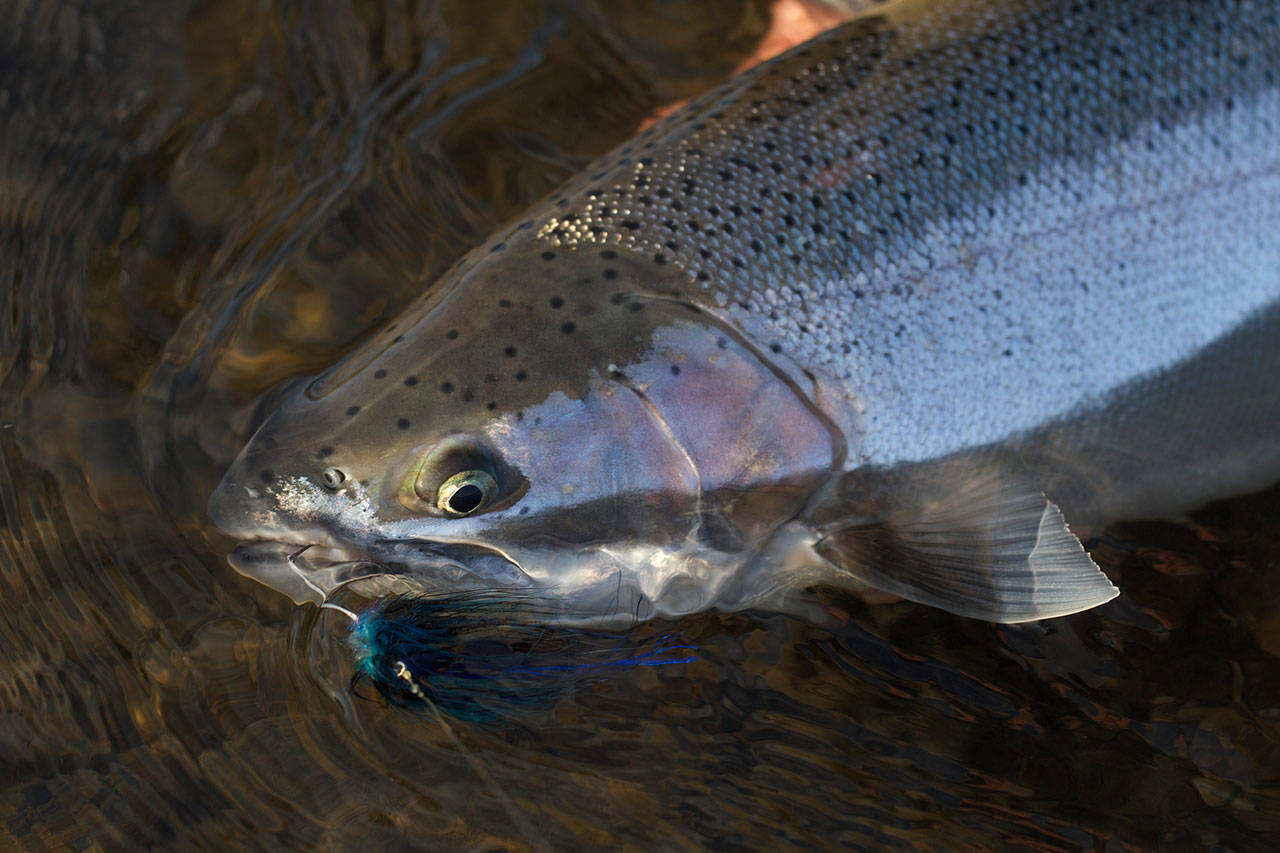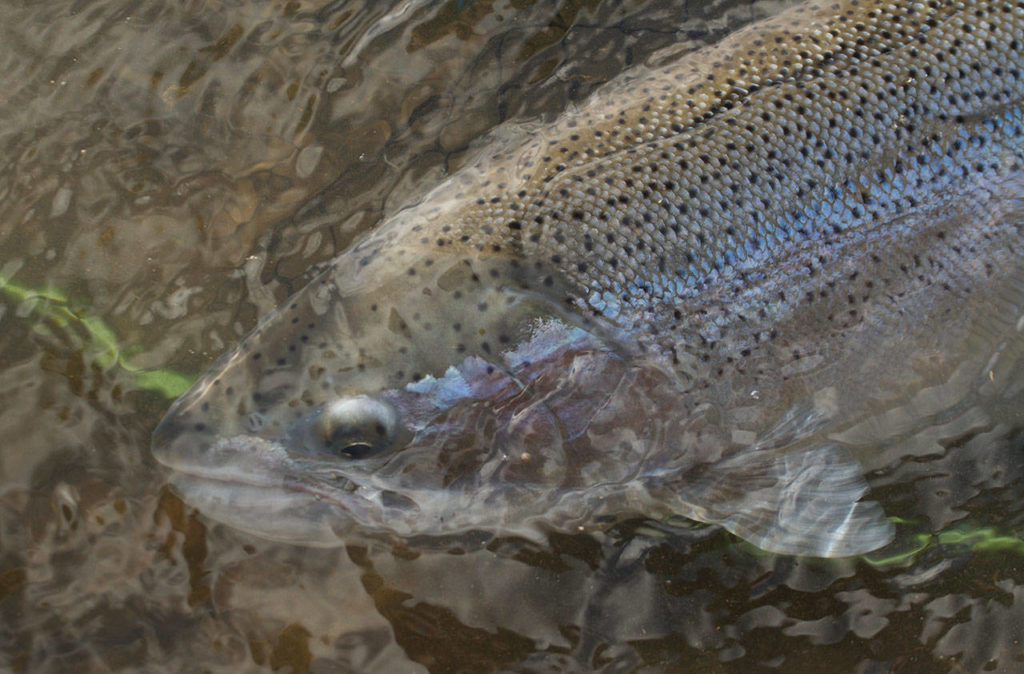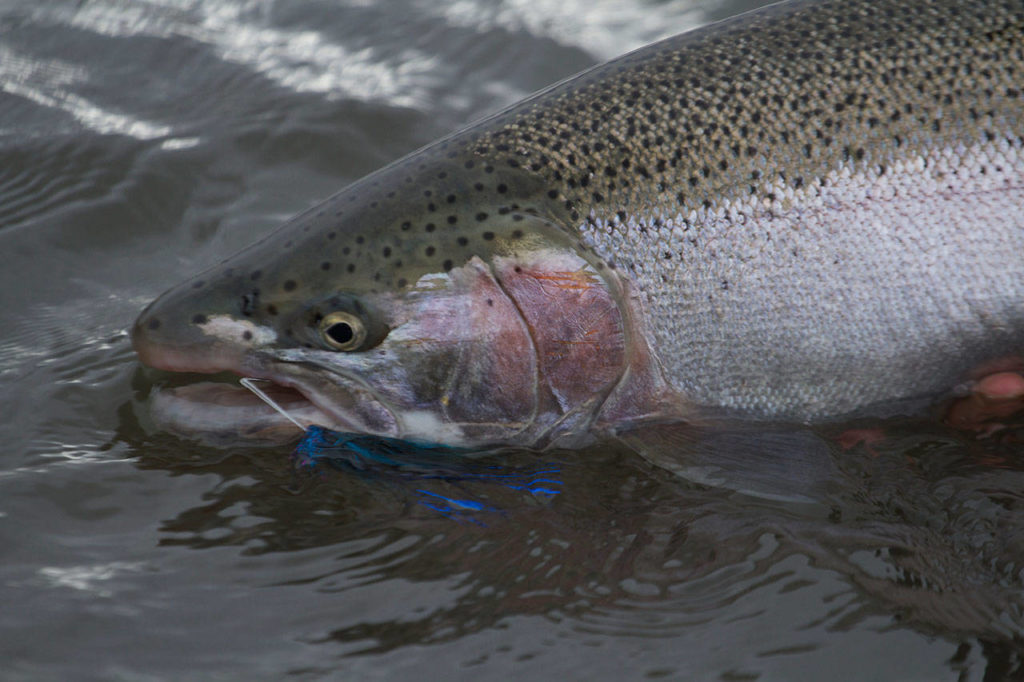By Mike Benbow / Special to The Herald
The partial shutdown of the federal government likely will delay the state’s plan to open a special catch-and-release fishery for native steelhead on the Skagit and Sauk rivers.
The state Department of Fish and Wildlife and tribal leaders are seeking federal permission to open portions of the rivers for steelhead catch and release during daylight hours starting Feb. 1 and continuing until April 15.
The approval is necessary because the Skagit’s native steelhead run is threatened, meaning it’s protected under the federal Endangered Species Act.
But the request for continuing a special sport fishing season is sitting under a pile of paperwork on the desks of furloughed workers at the National Oceanic and Atmospheric Administration.
It’s unclear when NOAA employees will get back to work and when they will consider the 2019 special season.
“I’m ready for it, but the government shutdown is throwing kind of a wrinkle in it right now,” said Edward Eleazer of the state Department of Fish and Wildlife.
Eleazer said he’s been waiting for some sign of when NOAA employees will be getting back to work, but that hasn’t been forthcoming. It will take time for federal officials to consider the request, so the special season could be delayed unless the government shutdown ends quickly.
Fishing for native steelhead, a rainbow trout that goes to sea to find more food, has been closed in the Skagit and Sauk since 2009 because of the threatened designation.
Since then, the run has been rebuilding in numbers and anglers started an Occupy Skagit movement in which they stood in the river without fishing to support the idea of a catch-and-release fishery.
Their efforts were successful.
Eleazer said the protest was effective in getting officials to propose the special season in 2018. And he said last year’s season and its special rules were effective with only a minimal impact on the steelhead. Anglers caught and released some 560 fish. About 6,500 native steelhead are forecast in the Skagit this year, and the catch-and-release period for them has been expanded under this year’s plan.
The Skagit River has a storied run of wild steelhead. The wild fish are larger and more powerful than those of many of the state’s other rivers. Unlike salmon, which spawn in the river and die, steelhead can return to the sea and continue to grow after spawning.
The catch-and-release fishery, intended to greatly reduce harm to the steelhead, requires special rules. Anglers can use only a single, barbless hook on lures or flies and they can’t fish from a moving boat, meaning the boat must be anchored while people fish or anglers must wade the river to fish.
Mondays and Tuesdays would be closed to fishing under the plan to give the steelhead a little breathing room, Eleazer said.
Catch and release
The National Oceanic Atmospheric Administration offered these tips to improve the survival rate of the fish you release:
— Use a single, barbless hook so it can be removed quickly and easily.
— Don’t play the fish to exhaustion. Use strong enough rods and lines to bring fish in relatively quickly.
— Leave the fish in the water and remove the barbless hook with a pair of forceps or pliers. If the hook is swallowed and can’t be easily removed, cut the line as close to the hook as possible and release the fish.
— Handle the fish as little as possible and only use wet hands.
— If a fish is sluggish, resuscitate it by facing it into the current and moving it back and forth until it regains strength and swims off.
— If you do have to remove the fish from the water, do so for less than 60 seconds and try to support its weight along the body. A rubber net helps to protect the fish. Knotted nylon nets can cut into the fish’s protective outer layer.
— Don’t just remove the hook and toss the fish back into the river. Ease it into the water and revive it if necessary.
Talk to us
> Give us your news tips.
> Send us a letter to the editor.
> More Herald contact information.



























